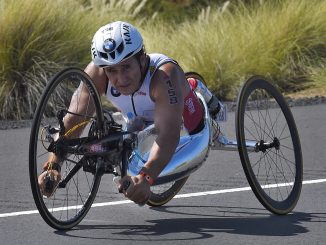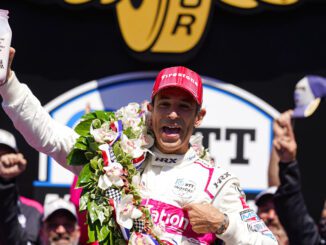AUSTIN — Formula One is the best motorsport in the world. It has the best drivers, the most advanced technology, and the rock stars behind-the-scenes who make it all happen: the engineers. (Really.)
As a fan, it’s also one of the most difficult sports to get into. There’s drama and intrigue and money and star power and speed and more money and noise. It’s a year-long soap opera, combining inter- and intra-team rivalries, cheating scandals, mental mistakes, and a 3.426-mile lap where thousandths of a second can move someone from first place to first loser.
Every fall since 2012, the F1 world has gathered at the purpose-built Circuit of the Americas just outside of Austin. There’s a 251-foot observation tower towering over the track. There’s a zipline. There are yearly music acts, a nod to Austin’s self-proclaimed title as Live Music Capital of the World (and a way to juice attendance numbers). Pink and Imagine Dragons were the stars of the show this year.
Walk around Sixth Street in downtown Austin and F1 garb is everywhere. Adrenaline-fueled drivers and mechanics are here to party too — they’re the one’s with the foreign accents who aren’t wearing F1 gear, by the way.
The United States Grand Prix draws from all over. The F1 season runs from March to December across 21 races and Austin is the only US stop. Mexico City and Montreal also host North American races, but US-based Liberty Media, the new owners of Formula One, are eager to expand the sport in the country. A proposal to bring a new race to Miami appears dead in the water, but they’ll get it done eventually.
But the biggest challenge is attracting new fans to the sport. Formula One is complicated and esoteric. The drivers and mechanics all have funny accents and the races happen at weird times. If you want to watch the Japanese Grand Prix live, for example, you’ll need to be up at 1AM on a Saturday night.
The lingo is baffling and acronyms abound. DRS, the undercut, a steward’s inquiry (yes, referee battles happen here too), post-race disqualifications. But 20 mechanics executing the perfect 2.1-second pit stop in a majestic ballet of air guns and tire squeals is magnificent and unparalleled anywhere else in sport. An entire ninety-minute race can rest on a one-second screwup in the pits.
There aren’t any American drivers, for a variety of reasons, and the one American team, owned by NASCAR and CNC-giant Gene Haas, is filled with names unfamiliar to an American audience.
But I’m doing my part to create F1 converts. The best place to start is a ten-part documentary series on Netflix called “Formula 1: Drive to Survive.” Because the sport is so competitive, and there’s so much money at stake (big teams can routinely spend $500 million per year), F1 teams are notoriously secretive. The production crew behind Drive to Survive got unparalleled access and stuffed a season’s worth of drama into just ten hours. It is, without question, the best introduction to the sport there is. And it’s a pretty great watch on its own.
The second-best place to start is in Austin on race weekend. F1 fans are incredibly friendly and eager to explain the sport to newcomers. Loyalties stretch across teams as drivers move from one outfit to another. Perversely, because while there are ten teams, only a few compete for the top positions, there are actually multiple races happening at once.
There’s the top three teams of Mercedes, Ferrari, and Red Bull (yes, the energy drink company), and they make up one pack. Then below them is the mid-field, which effectively runs its own race. It’s a best-of-the-rest scenario that is affectionately nicknamed “Formula 1.5.” Some of the best racing happens here, as the teams are really closely matched.
There’s the old guard drivers of Mercedes driver Lewis Hamilton (who just claimed his sixth championship title in Austin) and Ferrari’s Sebastian Vettel competing with upstarts like Vettel’s teammate Charles Leclerc and Red Bull’s Max Verstappen, who competed in his first F1 race when he was 17 and couldn’t legally drive on the road in Australia where the race took place. There’s just so much to watch.
The United States Grand Prix is my favorite weekend of the year, and it’s over far too quickly. I can’t wait to go again.
The Brazil Grand Prix takes place November 17, with the final race of the season happening on December 1 in Abu Dhabi. Races can be seen on ESPN.



